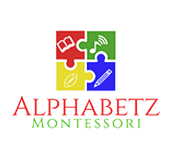In the intricate web of social welfare programs, the Child and Adult Care Food Program (CACFP) stands out as a critical support system for low-income families across the United States. This program, often overshadowed by its more well-known counterparts like SNAP or WIC, plays a pivotal role in ensuring that children and adults in care settings receive nutritious meals and snacks. This blog delves into the essence of CACFP, its impact on communities, and the potential paths it may tread in the future.
Introduction: Understanding CACFP
At its core, **CACFP** is a federal program designed to provide nutritional support to children and adults in child care, adult care, and emergency shelter facilities. Its primary goals are to improve and maintain the health and nutritional status of participants, promote the development of good eating habits, and integrate nutritious food service with organized child and adult care. The roots of CACFP trace back to the 1960s, with its formal establishment under the Child Nutrition Act of 1966. The program was a response to the growing awareness of the critical link between nutrition, cognitive development, and educational achievement.
The Role of CACFP in Supporting Low-Income Communities
CACFP serves as a cornerstone for nutritional education and resources, ensuring that participants have access to healthy meals. This is particularly crucial in low-income communities where food insecurity can be a pervasive issue. By offering financial assistance to eligible child and adult care institutions, CACFP alleviates some of the economic pressures faced by low-income families, ensuring that their loved ones receive nutritious meals without further straining the family budget.
Key Benefits:
– **Nutritional Education:** Provides resources and guidance on healthy eating habits.
– **Financial Assistance:** Reduces the economic burden on families by subsidizing meal costs.
CACFP in Action: Success Stories and Impact
Across the nation, numerous communities and care centers have reaped the benefits of CACFP. For instance, a child care center in a low-income neighborhood in Chicago reported a significant improvement in children’s attentiveness and overall health after joining CACFP. The program’s emphasis on balanced meals contributed to a noticeable decrease in sickness among the children, which in turn, improved attendance rates.
Testimonials from families echo these sentiments. One parent shared, “Knowing my child is receiving healthy meals at daycare eases my worries. It’s one less thing to stress about.”
Impact Highlights:
– **Improved Health:** Better nutrition leads to healthier, more active participants.
– **Enhanced Educational Outcomes:** Proper nutrition supports cognitive development and learning.
Beyond Nutrition: The Broader Benefits of CACFP
CACFP’s influence extends beyond just providing meals; it fosters educational and social development. Structured meal times are opportunities for learning and social interaction, contributing to the overall well-being of children and adults alike. Furthermore, CACFP encourages community building and social cohesion by bringing people together around the fundamental act of sharing meals.
Broader Benefits:
– **Educational and Social Development:** Meal times as learning opportunities.
– **Community Building:** Fosters a sense of belonging and community cohesion.
Navigating Challenges and Looking Ahead
Despite its successes, CACFP faces challenges in expanding its reach. Administrative hurdles, lack of awareness, and funding constraints are some of the obstacles that limit the program’s potential impact. Addressing these challenges requires concerted efforts from policymakers, community leaders, and stakeholders to streamline processes, increase awareness, and secure adequate funding.
Looking ahead, the future of CACFP lies in its ability to adapt and expand. Innovations in program delivery, expanded eligibility, and increased investment could significantly enhance its capacity to serve more low-income families. As we move forward, the continued evolution of CACFP will be crucial in ensuring that no child or adult is left behind in our pursuit of a healthier, more inclusive society.
Future Prospects:
– **Innovations in Delivery:** Exploring new ways to reach and serve participants.
– **Expanded Eligibility:** Broadening the criteria to include more families.
– **Increased Investment:** Securing the necessary funding to enhance program reach and impact.
In conclusion, CACFP is more than just a food program; it’s a lifeline for countless low-income families, providing not only nutritional support but also fostering educational and social development. As we look to the future, the potential of CACFP to transform communities and lives is boundless, provided we navigate its challenges with foresight and determination.

